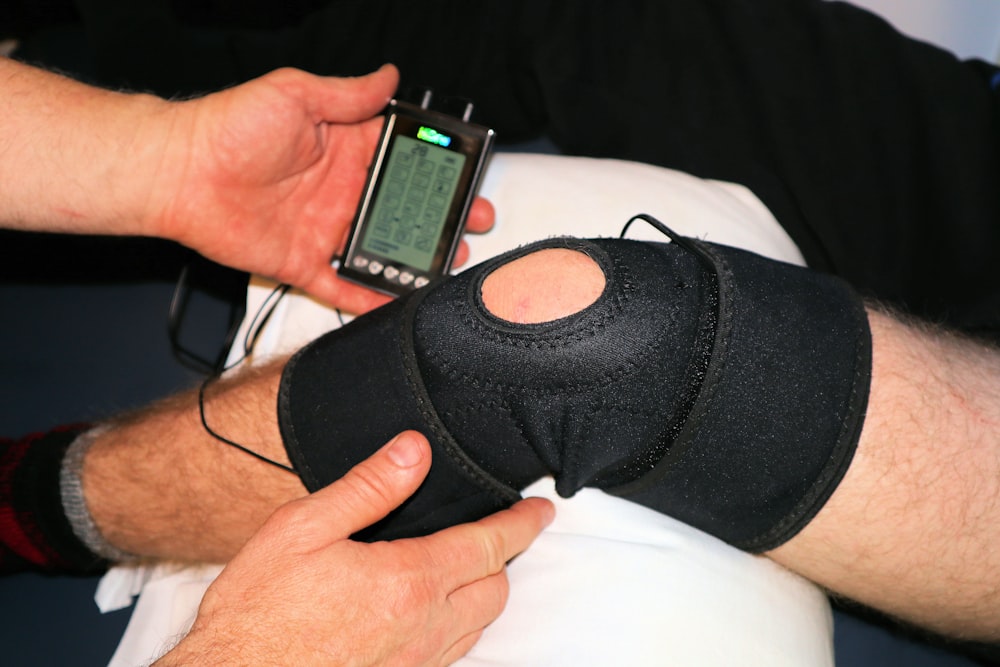目次
変形性膝関節症に対する運動療法は低用量で十分?
変形性膝関節症に対する運動療法を考える際に重要となるのが運動強度や運動時間です.
運動強度が高く運動時間が長い方がその効果も大きいと予測されますが,一方で強度が高い場合や運動時間が長い場合には関節痛が増悪してしまう可能性も考えられます.
実際のところ運動強度や運動時間によって効果に差があるのでしょうか?
今回は変形性膝関節症例に対する運動療法を考えるうえで参考になる論文をご紹介させていただきます.

今回ご紹介する論文
Ann Intern Med. 2023 Jan 24. doi: 10.7326/M22-2348. Online ahead of print.
High- Versus Low-Dose Exercise Therapy for Knee Osteoarthritis : A Randomized Controlled Multicenter Trial
Tom Arild Torstensen 1, Håvard Østerås 2, Riccardo LoMartire 3, Georg Mørtvedt Rugelbak 4, Wilhelmus Johannes Andreas Grooten 5, Björn Olov Äng 6
Affiliations expand
PMID: 36689746 DOI: 10.7326/M22-2348
今回ご紹介する論文は2023年に掲載された論文です.
研究の背景
Background: The benefits of exercise in patients with knee osteoarthritis are well documented, but the optimal exercise dose remains unknown.
変形性膝関節症例における運動の有用性はよく知られておりますが,最適な運動量は不明なままであります.
研究の目的
Objective: To compare high-dose versus low-dose exercise therapy with regard to knee function, pain, and quality of life (QoL) in patients with long-term symptomatic knee osteoarthritis.
この研究では長期にわたる変形性膝関節症例において,膝関節機能,疼痛,生活の質に関して,高用量と低用量の運動療法を比較することを目的としております.
研究デザイン
Design: A Swedish and Norwegian multicenter randomized controlled superiority trial with multiple follow-ups up to 12 months after the intervention. (ClinicalTrials.gov: NCT02024126).
研究デザインはスウェーデンおよびノルウェーの多施設共同無作為化比較試験で,介入後12ヶ月までの複数回のフォローアップを実施しております(ClinicalTrials.gov: NCT02024126).
研究セッティング
Setting: Primary health care facilities.
この研究はあるプライマリーヘルスケア施設で行われた研究です.
研究対象
Patients: 189 patients with diagnosed knee osteoarthritis and a history of pain and decreased knee function were assigned to high-dose therapy (n = 98; 11 exercises; 70 to 90 minutes) or low-dose therapy (n = 91; 5 exercises; 20 to 30 minutes).
対象は変形性膝関節症と診断され,疼痛と膝関節機能低下の既往がある症例189例としております.
この189例を高用量療法(n=98,11エクササイズ,70~90分)または低用量療法(n=91,5エクササイズ,20~30分)に割り付けております.
介入
Intervention: Patient-tailored exercise programs according to the principles of medical exercise therapy. Global (aerobic), semiglobal (multisegmental), and local (joint-specific) exercises were performed 3 times a week for 12 weeks under supervision of a physiotherapist.
医学的運動療法の原則に基づき,症例に合わせた運動プログラムを作成しております.
理学療法士の指導のもと,グローバル運動(有酸素運動),セミグローバル運動(多関節運動),ローカル運動(関節特異的運動)を週3回,12週間実施しております.
測定方法
Measurements: The Knee Injury and Osteoarthritis Outcome Score (KOOS) was measured biweekly during the 3-month intervention period and at 6 and 12 months after the intervention. The primary end point was the mean difference in KOOS scores between groups at the end of the intervention (3 months). Secondary outcomes included pain intensity and QoL. The proportion of patients with minimal clinically important changes in primary and secondary outcomes was compared between groups.
膝関節損傷および変形性関節症のアウトカムスコア(KOOS)を,3ヶ月の介入期間中および介入後6ヶ月と12ヶ月に,隔週で測定した.
主要評価項目は介入終了時(3ヶ月)のKOOSスコアの群間差の平均値でありました.
副次的評価項目は疼痛強度とQOLでありました.
主要アウトカムと副次的アウトカムにおいて臨床的に重要な最小限の変化を示した患者の割合を群間で比較しております.
研究の結果
Results: Both groups improved over time, but there were no benefits of high-dose therapy in most comparisons. One exception was the KOOS score for function in sports and recreation, where high-dose therapy was superior at the end of treatment and at 6-month follow-up. A small benefit in QoL at 6 and 12 months was also observed.
両群とも時間の経過とともに改善しましたがほとんどの比較において高用量療法の利点は認められませんでした.
例外はスポーツ・レクリエーションの機能に関するKOOSスコアで,治療終了時および6ヵ月後のフォローアップでは高用量療法の方が優れておりました.
また6ヵ月および12ヵ月後のQOLにもわずかな効果が認められました.
研究の限界
Limitation: There was no control group that did not exercise.
運動をしない対照群は存在しませんでした.
研究の結論
Conclusion: The results do not support the superiority of high-dose exercise over low-dose exercise for most outcomes. However, small benefits with high-dose exercise were found for knee function in sports and recreation and for QoL.
この結果はほとんどのアウトカムについて高用量運動の低用量運動に対する優越性を支持するものではありませんでした.
しかしスポーツやレクリエーションにおける膝関節機能とQOLについては高用量運動によるわずかな効果が認められました.
今回は変形性膝関節症例に対する運動療法を考えるうえで参考になる論文をご紹介させていただきました.
今回の結果から考えるとスポーツやレクリエーション活動以外を考える場合には高用量の運動療法は不要かもしれませんね.






